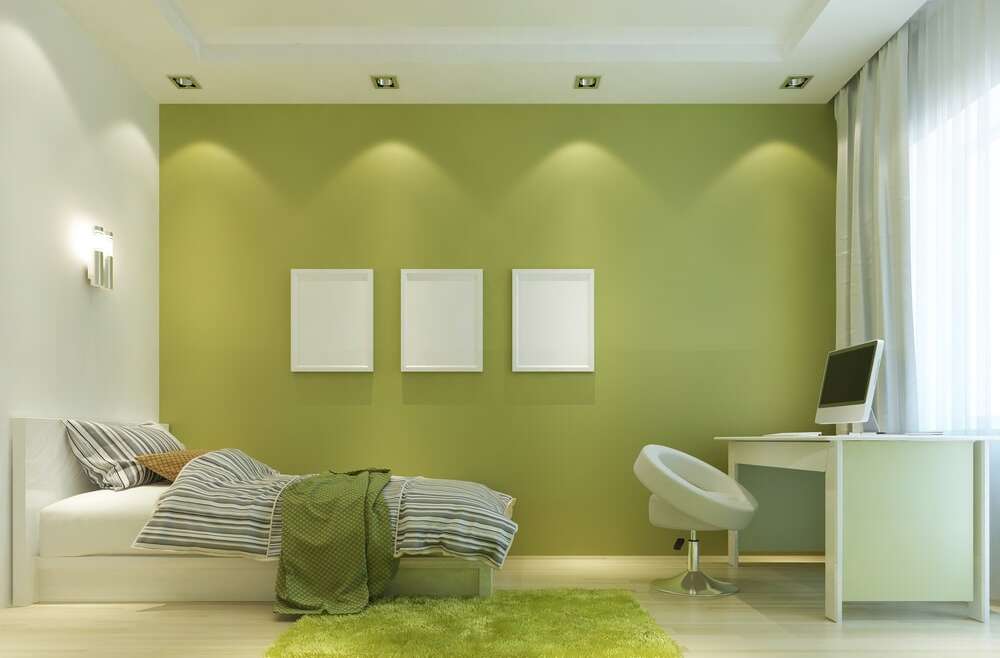Do you have a room that’s too dark, too bright, lacks drama, or seems too bold?
A room you never use because it doesn’t feel quite right? A room that’s too short or too long?
With some basic facts about the design elements of light and color you can minimize these problems and create the atmosphere you’re after.
Understanding the basics of lighting
There are basically three types of lighting. Ambient, task, and accent lighting. Ambient lighting is the general light in a room. It could be sunlight, or if artificial, would include ceiling lights or any light that fills a room without emphasizing any particular area. Task lighting is focused. It illuminates a particular area for the purpose of accomplishing a task. Examples would include a reading light on a desk or under-cabinet lights in a kitchen near a food preparation area.
Accent lights are used to accentuate an area and can be considered decorative in purpose, although they may still provide useful light. These could include a spotlight on a painting, a light shining upward from the floor focused on an indoor plant or tree, or sconces and torchieres (lights on long poles whose bulbs point upwards) to accent some other unique item or feature in your home.
Understanding the basics of color
When referring to color in our homes, we often speak in terms such as warm or cool, advancing or receding, or by the mood they convey – cheerful, dramatic, cozy, and others. What does all this mean and how can we use our under-standing to change a room? To make these concepts more clear, I’ve provided a few examples. The family of colors in the yellow, orange and red hues are active, warm, advancing (seeming to come toward you), invigorating, cheerful, or cozy.
The family of colors in the blue, green and purple hues are passive, cool, receding (seeming to move away from you), and calming. Neutral colors include brown, beige, gray, white and taupe.They’re neither active nor passive and are popular as transition colors. They’re often used as a background or to tone down the effects of other colors. Many homes are painted entirely in neutral tones with furniture and accessories providing all the color.
Putting them together to transform a room
When you’re considering new paint in a room, ask yourself these questions:
Will I spend more time in this room during the day or at night?
What type of activity will take place in the room?
What direction does the room face?
Is the room too large or too small?
Does it seem too long or too short?
Is there a source of natural light in the room?
Here are some possible remedies:
After a long day you may need a relaxing spot to get away from it all and re-energize. For this, you might choose one of the cooler colors for their calming effects. To make a small room seem larger you might also choose the greens, blues and purples because of their ability to make the background recede, making the walls seem to move away from you.
If you have a north facing room that tends to be cold, choose a warmer color, in the red yellow and orange family. But be careful not to use these same hues in a bright sunny room. You may find yourself unbuttoning your collar and mopping your brow. A large room can feel more intimate and cozy by warming the space with more active colors. A room that feels too long can be made to appear shorter by painting the short walls in a warmer color, just as a short room can appear longer by painting its short walls a cooler color. There are probably hundreds of variations to the 6 colors I’ve referred in my brief look at color. But, if you recognize which end of the spectrum they belong to, you can use the guidelines to help determine which one will achieve the results you’re after. To see what’s available, visit a local paint store or home improvement center.
Talk to the experts, bring home color samples, or even experiment with some fresh paint on one or more fairly large pieces of wood. Lean them against the walls. Observe the color at different times of the day, with and without sources of light nearby. Find out which colors are popular, but avoid trends unless you plan to repaint every time the fashions change. Take into account your furnishings and accessories and notice how the color makes you feel. Experimenting in this way allows you the opportunity to change your mind before investing time and money.
Above all, choose the colors you like…unless you plan to sell your house in the near future. In that case, stay with neutral tones and your home will appeal to a larger pool of potential buyers. Strangers may not appreciate your taste, or own furniture that will work within the color scheme you’ve chosen. Rather than repainting the rooms themselves, they’ll move on to a home that’s ready to move into without the extra fuss. By simply combining color and light you can minimize aspects of a room that might otherwise detract, create virtually any mood you choose, and add drama to any space.

